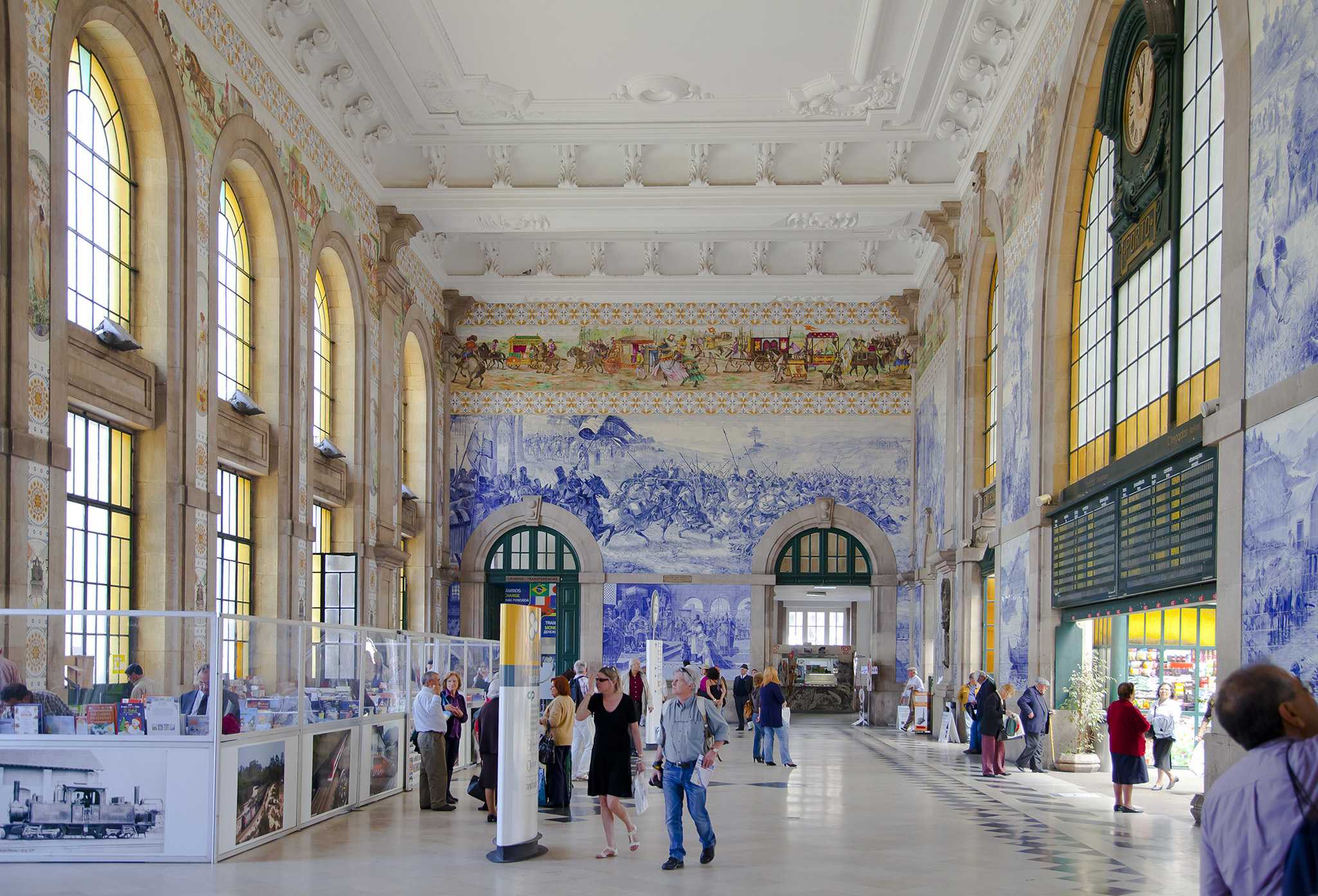São Bento Railway Station in Porto, Portugal, is not just a transportation hub but a historical and cultural landmark. Known for its stunning azulejo tilework, the station is a must-visit for anyone traveling to Porto. Whether you’re a history buff, an art lover, or simply someone who appreciates beautiful architecture, São Bento offers a unique glimpse into Portugal’s rich heritage.
Getting to São Bento Railway Station
Located in the heart of Porto, São Bento Railway Station is easily accessible by various modes of transportation. If you’re staying in the city center, you can reach the station on foot, as it is conveniently situated near many popular attractions. For those coming from further afield, the Porto Metro system is a reliable option. The closest metro stop is São Bento, which is on the D line (yellow line). Alternatively, buses and taxis are readily available throughout the city, making it easy to reach the station from any location in Porto.
What to See at São Bento
The main attraction at São Bento Railway Station is undoubtedly its breathtaking azulejo tile panels. Covering approximately 551 square meters, these blue and white tiles depict significant historical events and everyday life scenes in Portugal. Created by artist Jorge Colaço, the tiles were installed between 1905 and 1916. As you enter the station, take a moment to admire the intricate details and the stories they tell. The main hall is where you’ll find the most impressive displays, so be sure to have your camera ready.
In addition to the tiles, the station’s architecture is worth noting. Designed by architect José Marques da Silva, the building combines French Beaux-Arts style with traditional Portuguese elements. The grand entrance, high ceilings, and ornate details make it a beautiful example of early 20th-century architecture.
Tips for Visiting São Bento
To make the most of your visit to São Bento Railway Station, consider the following tips:
- Timing: The station is open to the public throughout the day, but visiting during off-peak hours can provide a more relaxed experience. Early mornings or late afternoons are ideal times to avoid the crowds.
- Photography: While photography is allowed, be mindful of other visitors and commuters. The station is a functioning railway hub, so be respectful of those who are there to catch a train.
- Guided Tours: If you’re interested in learning more about the history and significance of the azulejo tiles, consider joining a guided tour. Many local tour companies offer walking tours that include a stop at São Bento, providing valuable insights into the artwork and architecture.
- Nearby Attractions: São Bento’s central location makes it easy to explore other nearby attractions. The Porto Cathedral, Clerigos Tower, and Livraria Lello are all within walking distance, allowing you to make the most of your time in the city.
- Accessibility: The station is equipped with ramps and elevators, making it accessible for visitors with mobility challenges. If you require assistance, station staff are available to help.
São Bento Railway Station is more than just a place to catch a train; it’s a window into Portugal’s past and a testament to the country’s artistic heritage. Whether you’re passing through on your way to another destination or spending time exploring Porto, a visit to São Bento is an enriching experience that shouldn’t be missed.
